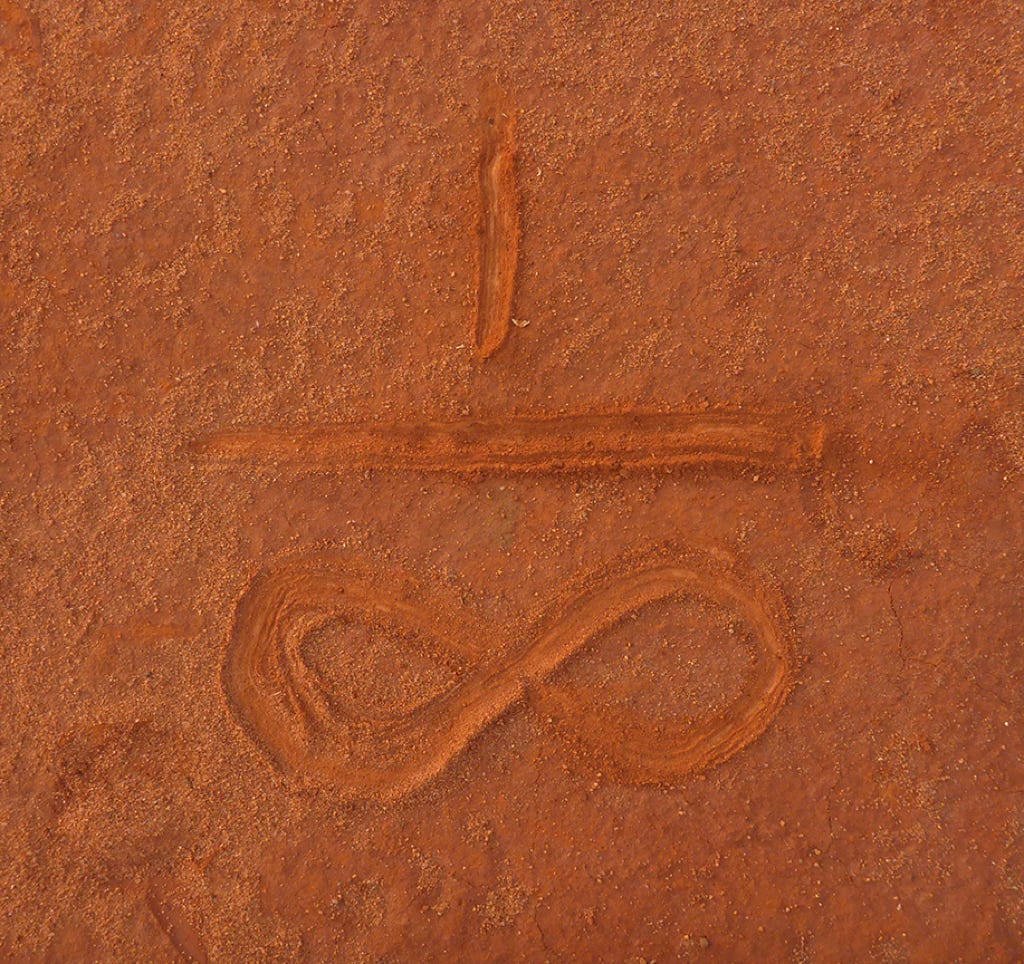07/03/2017
Stuff in the manifest world exists within the three dimensions of space. Often the stuff is moving around, which means that its spatial location is changing in time. The three dimensions of space and the dimension of time together constitute the space-time continuum. This space-time is not, itself, stuff in the same sense as the manifest stuff that exists within it. Rather, it is a frame of reference.
Usually a frame of reference is an unchanging domain, delineated with a regular metric of some sort. The unchanging nature of the frame of reference gives it an absolute quality, at least for the purposes of describing whatever is going on within the domain. Psychologically and philosophically, it is convenient that the frame of reference has this feeling of being absolute. It allows us to accept it without having to refer to something else, even grander. The absolute frame of reference provides a bedrock. Another way of putting this is that stuff within the frame of reference does not alter the frame of reference.
For a long time, it was assumed that space and time were unchanging and therefore carried this absolute quality. Then came Einstein. His special and general theories of relativity, as the names suggest, declared that space-time is not independent of the stuff within space-time. In other words, the frame of reference is relative, not absolute. Stuff, specifically mass, changes the ‘shape’ of space-time. As stuff is moving around, the shape of space changes over time. Even more mind-boggling than that, time is also being stretched in the same way. (One of the beautiful features of the general theory of relativity is that time is not distinguishable, mathematically, from the three dimensions of space.)
It seems that the human mind struggles with relativity. We want there to be a bedrock. Living in a relativistic universe is like discovering that your house is built on quicksand. There is no foundation. Nevertheless, all the science is indicating that we do live in a relative frame of reference.
If the theory of relativity is too much to grasp, perhaps an easier example is the theory of plate tectonics. This states that the surface of the Earth is comprised of a set of plates which move around. If I am standing on a particular plate then I could use a local frame of reference which applies over the area of that plate. Within this frame of reference, I might seem to be standing still. However, to an observer on another plate, who is also standing still within her local frame of reference, I will appear to be moving. (Of course, this movement happens rather slowly by our human standards, so for practical purposes we can usually ignore it.)
Like space-time, the plate tectonic example is another case where people had previously assumed things (the layout of the continents) to be unchanging. It seems that the thinking mind has a built in bias towards seeing things as static. We want things to be unchanging. It’s challenging enough when things within our frame of reference change. The fact that our frames of reference are also changeable is more than most of us can come to terms with!
So far we’ve looked at rather physical frames of reference. However, there are other sorts of frames of reference such as social ones. All the rules of the society within which we find ourself constitute a frame of reference. Such a frame is meant to apply to all the people within the society. As long as everybody plays by the same rules, social life has a chance of flowing harmoniously. The trouble comes when someone steps outside that frame of reference and lives by different rules. The usual resolution of such a situation is to put the person in a cage.
Even more trouble happens at the boundaries where one social frame of reference butts up against another. Typically this happens at the boundary of a nation state. Just as the boundaries of tectonic plates are where earthquakes, subduction and volcanoes happen, the boundaries of nation states are where humans tend to club together to kill each other en masse.
One way of understanding spirituality is to see it as a search for the absolute. It might be that this search is no more than another manifestation of that longing for things to be unchanging. Certainly the mainstream scientific understanding at the moment is that there is no absolute. And within the rules of science, that seems to be the case. However, for the spiritual enquiry, we need not be bound by the rules of science.
So, let’s step into the slightly more poetic language needed to hint at deeper spiritual truths. Gautam Buddha realised that everything is changeable and that nothing is permanent. Buddhist teachings also emphasise the interconnectedness of all that is. These realisations lead to a very relativistic understanding of life, when one is considering a part of it, such as oneself as a human being. However. something curious happens when we accept that everything is changeable and relative. The whole – everything – when viewed as a single, indivisible process, begins to have the feel of the absolute. The indivisibility that is implied by the word relativity is a key characteristic of the absolute. So, when things are completely relative, including the grandest frame of reference itself, the absolute is revealed.
Apart from stuff though, spirituality leads us to the absolute in another form: the formless. The unmanifest lies completely outwith the scope of science. As human beings we can touch the space of this source when, for a moment at least, our minds become still and silent. In such a state of meditation, the unbounded space of empty, impersonal consciousness is all that is present. Having experienced such a state, if experience is an applicable word, one feels that one has tasted something absolute. This source of all that is becomes something like a frame of reference within which the dance of life is playing out.

